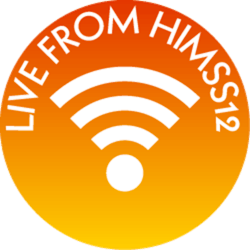For many healthcare organizations, access to electronic health record data from mobile devices is a nice convenience. For others, it is an absolute necessity. The latter is the case for Sutter Care at Home (SCaH), the homecare division of Sutter Health, a $9 billion integrated health system inEmeryville, Calif., that provides home health, hospice, home medical equipment, and home infusion and pharmacy services throughout Northern California.
During a lively HIMSS presentation on Feb. 21, Philip Chuang, SCaH’s director of information services, and Edward Elliott, technical services manager, described some lessons learned on a journey to enterprise usage of a mobile EHR —and some of the benefits.
First, the benefits: Chuang said SCaH has been able to increase point-of-care documentation from 10 percent to between 60 and 70 percent. It has reduced the time from start of care to initial billing from 35 days to around a week. Just cutting down on paperwork has led to a reduction of 10 to 20 percent in administrative costs.
But Chuang said that to achieve that type of productivity gain, organizations must recognize and address the user experience issues that result from deploying mobile device-based EHRs and develop a mobile device strategy and plan.
When he arrived at Sutter several years ago, Chuang said, there was already a mobile EHR solution in place, involving tablet PCs and AirCards, but a ride-along with employees revealed that they weren’t really being used much because the form factor wasn’t quite right. “Clinicians went in to see patients without the computer,” he recalled. “The closest they ever got the patient was in the car. We were spending millions on an effort to deploy technology and they were not using it. That was not good for patients or clinicians.” He said it was time to re-evaluate the solution. “We had to make sure we were betting on the right horse. We had to engage clinicians in the process as we moved in a new direction to find the right form factor for working in the field, so the device doesn’t get in the way.”
SCaH chose to adopt an EHR designed for the mobile device, with local client software and database install, he said. “It had to be always available and cannot be limited by cellular data coverage,” Chuang said. Of course, that led to a focus on how to address security and privacy concerns about the data. Chuang said they started with smart phones and are now moving to tablets.
Elliott said that whether your employees use Apple iOs or Android-based devices, you have to work closely with a vendor of mobile device management (MDM) software to make sure you have addressed encryption, policy controls, remote wipe, and application protection.
“When you interview MDM vendors, you have to assess their commitment to keeping up with platforms,” he said. “The number of solutions is growing, with three or four variations of each. If a new device comes out, but your MDM vendor has not implemented it yet, you are not going to be able to deploy it. Talk about their commitment to be out of the gate as soon as the device is out of the gate.”
Elliott said the BYOD (bring your own device) trend also complicates the situation. If you are going to allow the use of personal devices, you need to evaluate risks, identify policies, and determine how you can isolate personal from enterprise apps.
Finally, Chuang said, Sutter learned lessons about ergonomic and training issues. How employees enter data is a significant barrier that they still haven’t found an ideal solution for. Training was also an issue. “Our initial assumption is that employees know the app on their desktop,” he said, “but personal use fluency doesn’t automatically translate. We had to train just as much on the mobile device as we had on the computer.” And there was no how-to book on deploying mobile. “We got the best bang for the buck when we paired early adopter clinicians with IT staff members,” he added. “This was a new world for IT staff, too.”


